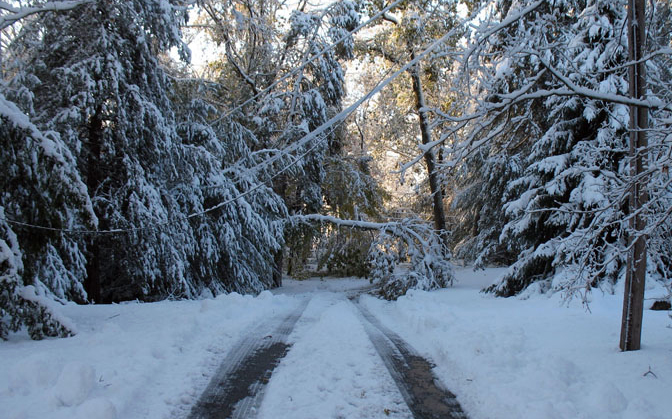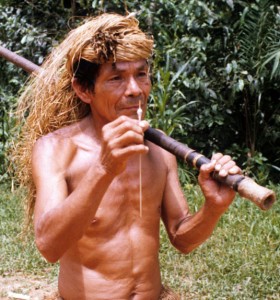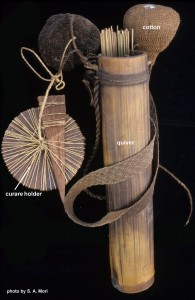Tropical Insects Don’t Like Snow!
Posted in Science on February 14 2013, by Scott Mori
Scott A. Mori, Ph.D., Nathaniel Lord Britton Curator of Botany has been studying New World rain forests for The New York Botanical Garden for nearly 35 years. He has witnessed an unrelenting reduction in the extent of the forests he studies and, as a result, is dedicated to preserving the diversity of plants and animals found there.

“So what,” you must be saying to yourself. In spite of how obvious the title is, the lack of cold weather in the tropics contributes both directly and indirectly to tropical biodiversity, the topic of this blog.
One of the many reasons that there are high numbers of species represented by low numbers of individuals in old growth tropical forests–compared to the opposite situation in temperate forests–is because of the greater number of plant/animal interactions in the former. In one of our 2.5 acre tree study plots in central Amazonian Brazil, we registered 285 species of trees with diameters at or above four inches at breast height. Because our plots average 600 trees above this size class per plot, almost every second tree we sampled represented a different species. In contrast, there are fewer than 100 species of trees of all size classes in the entire state of Wisconsin, where I grew up.
Ecologists have carried out experiments in which they have grown species together in controlled plots, with rich soil, adequate water, and sufficient sunlight, such that there were no limiting factors to their growth. In almost all cases, one or a few of the species prevailed over the others and eventually dominated the plot. So why don’t tropical forests have fewer instead of more species than temperate forests?

Among the many reasons that tropical forests are home to more species than temperate forests, one is obvious: it is difficult for plants to adapt to cold and hot temperatures at different times of the year. Another reason is due to higher numbers of plant/animal interactions, which in temperate forests are few because cold weather, the world’s best insecticide, keeps insects under control. This results in fewer interactions between plants and insect pollinators, dispersal agents, and predators; and reduces the number of plant species that evolve in temperate forests as the result of co-evolution with insects.
Here, I discuss only predation caused by insects, leaving the other interactions for future essays. In tropical forests there is unrelenting warfare waged by herbivorous insects on plants year-round. In order to withstand these attacks, some plants evolve chemical compounds that discourage insects from eating them. In turn, insects adapt by evolving mechanisms to detoxify the compounds. These interactions may lead to differences between two populations arising from a parent species, resulting in chemical and morphological differences great enough to merit recognizing the two populations as different species.

Mankind often benefits by using these bioactive compounds, employing them in arrow poisons and medicines. For example, some natives of South American rain forests tip their blowgun darts with curare, a compound extracted from species of woody vines, the most important of which are members of the moonseed (Menispermaceae) and strychnine (Strychnaceae) families. The poison paralyzes the muscles used in breathing, causing a dart-wounded animal to suffocate. Curare is also part of the pharmacopeia of substances used, especially in the past, as a muscle relaxant during surgery.
One of the benefits of living in temperate regions is that at least some insects are kept under control by our cold winters, a supposition difficult to believe by anyone who has been attacked by swarms of black flies in the Adirondacks through May and June! Be warned, however, that if predictions of global warming are true, it is possible that our great grandchildren will have to deal with many of the tropical insect pests that will migrate north as the weather warms. This will result in botflies, burrowing fleas, horseflies, sand flies, and countless other pests joining mosquitoes and black flies to make our outdoor activities less enjoyable.
All photos courtesy of Scott A. Mori.

